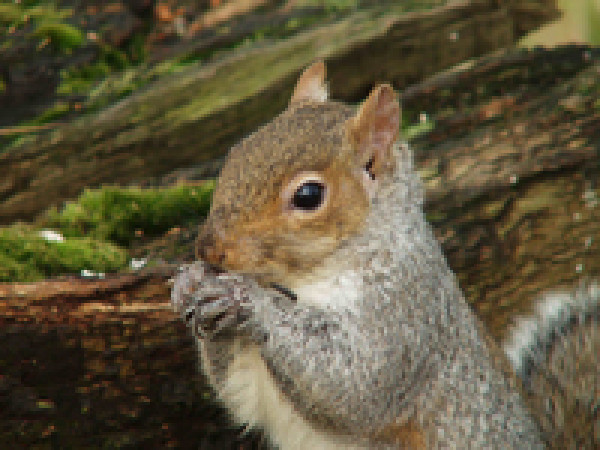Grey Squirrel
Sciurus carolinensis

Although predominantly grey in appearance, some individuals may show a warm brown colouration across their flanks and back. Some populations have individuals that are black (melanic), e.g. in parts of Hertfordshire, and occasional white individuals are not unknown. Juveniles are a darker grey than adults. The Grey Squirrel is larger than our native Red Squirrel and, therefore, less agile and unable to forage on the smaller branches of trees.
This native of North America was introduced into Britain from the 1870s onwards to several dozen different sites. Rapid expansion then followed and the species is now established across most of England and Wales, much of the Central Belt in Scotland and a good part of Ireland.
A wide range of habitat types is used, from mature broad-leaved woodland to conifer plantations, urban parks and gardens with mature trees. The association with woodland and mature trees reflects a diet dominated by tree seeds and other plant material but the species will also scavenge at bird tables and is known to take the eggs and young of birds.
One of the characteristic behaviours of autumn is the caching of food items, especially acorns. The Grey Squirrel has been found to cache those acorns that keep well, eating others that have a short shelf-life, perhaps because of damage to the seed coat.
Female Grey Squirrels can have two litters each year, one in the spring and one in the summer. Each litter contains 3-4 young. Grey Squirrels can breed from as young as 10-12 months.






Share this page